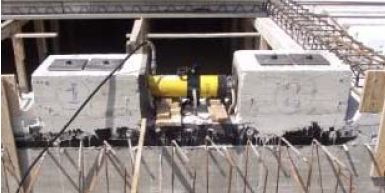1 Msc, University of Pisa, DESTEC – Department of Energy, Systems, Territory and Constructions Engineering, Largo L. Lazzarino 1, 56126 Pisa, Italy, marco.andreini@dic.unipi.it
2 PhD, Assistant Professor, University of Pisa, DESTEC – Department of Energy, Systems, Territory and Constructions Engineering, Largo L. Lazzarino 1, 56126 Pisa, Italy, a.defalco@ing.unipi.it
3 Msc, University of Pisa, DESTEC – Department of Energy, Systems, Territory and Constructions Engineering, Largo L. Lazzarino 1, 56126 Pisa, Italy, linda.giresini@dic.unipi.it
4 Msc, University of Pisa, DESTEC – Department of Energy, Systems, Territory and Constructions Engineering, Largo L. Lazzarino 1, 56126 Pisa, Italy, filippo_lombardi@hotmail.it
5 PhD, Associate Professor, University of Pisa, DESTEC – Department of Energy, Systems, Territory and Constructions Engineering, Largo L. Lazzarino 1, 56126 Pisa, Italy, m.sassu@unipi.it
ABSTRACT
An innovative reinforced dam p proof course, th e RCW seismic dissipator, is hereby proposed. An application has been perfor med in a m asonry building for council housing estate with 42 flats. It consists of a cour se between foundation a nd ground floor m ade by 3-4 m m glued foil overlapped by 60 mm layer of weak mortar, reinforced by several couples of vertical steel bars. In case of low seism ic actions, the RCW ensu res a connection between basem ent and ground floor; in case of strong motions, the damage of weak mortar layer allows relative displacements dissipating energy by friction mechanism, while vertical steel bars furnish elastic restoring force to lead back the buildin g to the initial position after the earthquake. Tests are performed on two couple of specimens: several series of quasi-static tim e histories with increasing intensity were applied in presence of different com pression levels. Trials sh owed the self -centering performance of the RCW and the wide hysteretic behaviour. The increase of building seism ic performance obtained by the RCW has been eval uated by way of num erical models: the results are presented in terms of behaviour factor q.
KEYWORDS: base dissipator, on-site testing, case study, RCW, seismic behaviour
241.pdf



